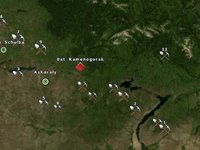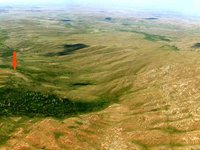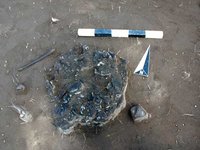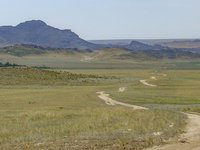Forschungsprojekte
The appearance of mobile pastoralist lifestyle, intense metallurgical activities and transfer of its products, long distance trade connections with different cultures were started to take charge with the first half of the 2nd millennium BC, related with a Middle Bronze Age culture named “Andronovo“. Its find places are widespread in many parts of the Central Asia from Urals to Yenisey, stretching in different zones of forest steppe, dry steppe and desert to south to Near Eastern Cultures. The question of why these groups were mobilized and expanded to a vast area remains unanswered. Yet the transition to pastoralist lifestyle and mobilization were considered triggered by the climatic changes, recently the new dates and information coming from researches in mining areas strengthens the possibility of a relation between metallurgical activities about the expansion of groups.
In my research I will question the mobility from the point of animal husbandry - the vital part of this past society's subsistence pattern, enables them to move for long distances and assumed to sustain metallurgical activities. I would like to focus on two regions in my research; Central and Eastern Kazakhstan, the first region is abundant in copper and latter is rich in tin ore. Also in later periods it is assumed to be connected together by cultural resemblances. I want to investigate if husbandry activities are going along with the transportation of ore from the mines to the sites, where the bronze is produced. And considering the question of “if the extracted tin from Eastern Kazakhstan transported to Central Kazakhstan along with the pastoral herding movements“, for bronze production.
I aim to reach the information of animal husbandry pattern; which animals are herded for long distances, which kept in the settlements. And besides, to observe the individuals who are mobile in a community, who are travelling to the mines with which herding patterns. Also the information by two regions if\how the regional transport is achieved to bring the copper and tin together.
Provenance and diet of certain cultural groups, herding pattern, also with the questions regarding the climate change will be questioned by several stable isotope analysis on archaeo-biological material. I will use strontium isotope analysis on the animal and human tooth and bone to be able to see the movement patterns and compare it between the mines and other sites (settlements and graves). I will try to observe the diet of herding animals by light stable isotopes to be able to understand the possible routes between the provenance and the destination. Also I will include the archaeo-zoological information to compare the ethnographical assumptions of different animal husbandry patterns.
From the methodological point, this work will be helpful to fill the gap between the mining archaeology – archaeometallurgy and archaeology from the point of organizing the metallurgical activities and relations with subsistence strategies in society. And hopefully, it will also help to understand the effects of economy to migration, and after being compared by cultural historical information new questions could be developed according to the cultural formations and social organization.
Weitere Dissertation
Zugehöriges Projekt
Informationen zum Projekt
Deutsches Bergbau-Museum Bochum, Forschungsbereich Montanarchäologie
2012 – 2015
- Özyarkent, H., 2013. Animal Herder-Miners of the Andronovo Culture. Metalla 20.2, pp. 8-16.




